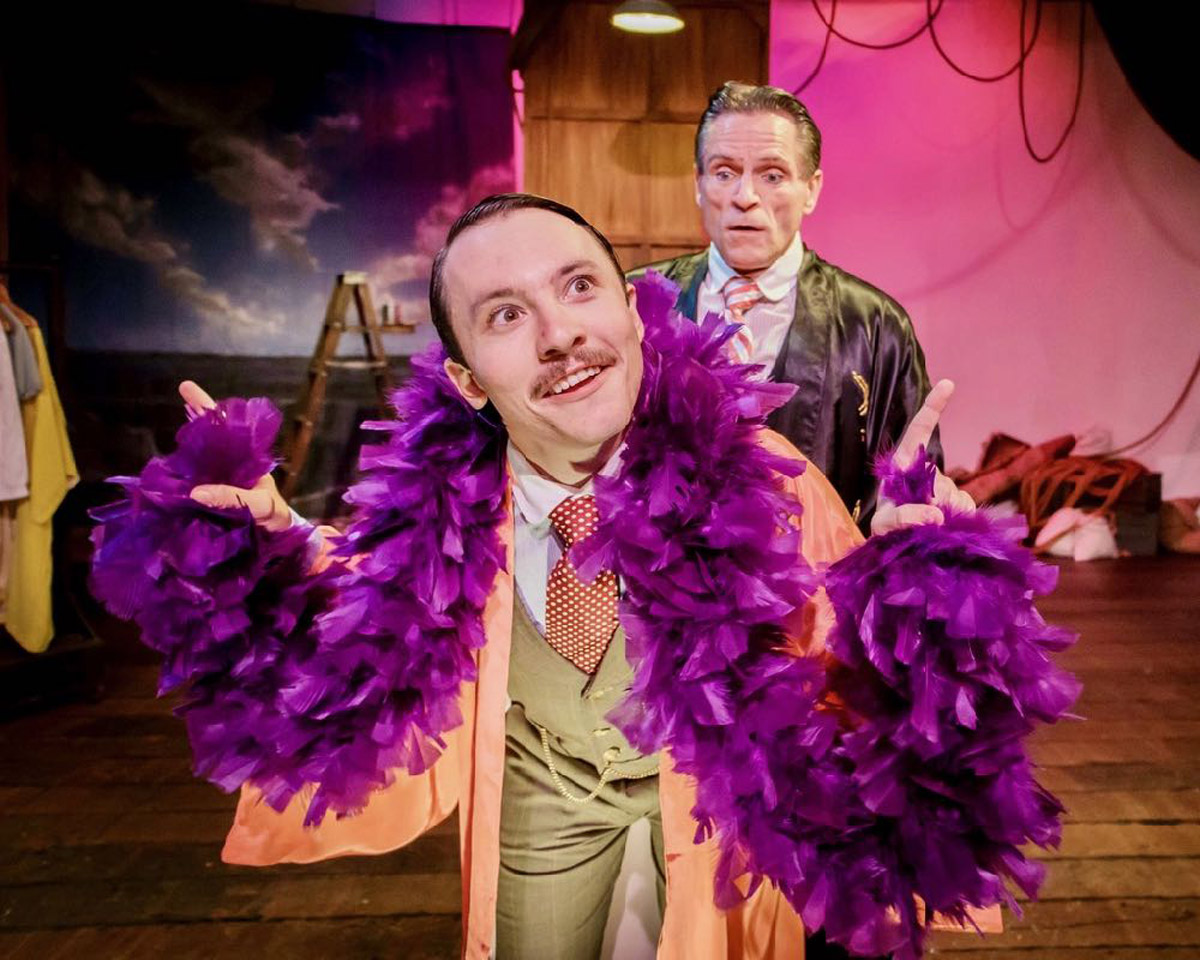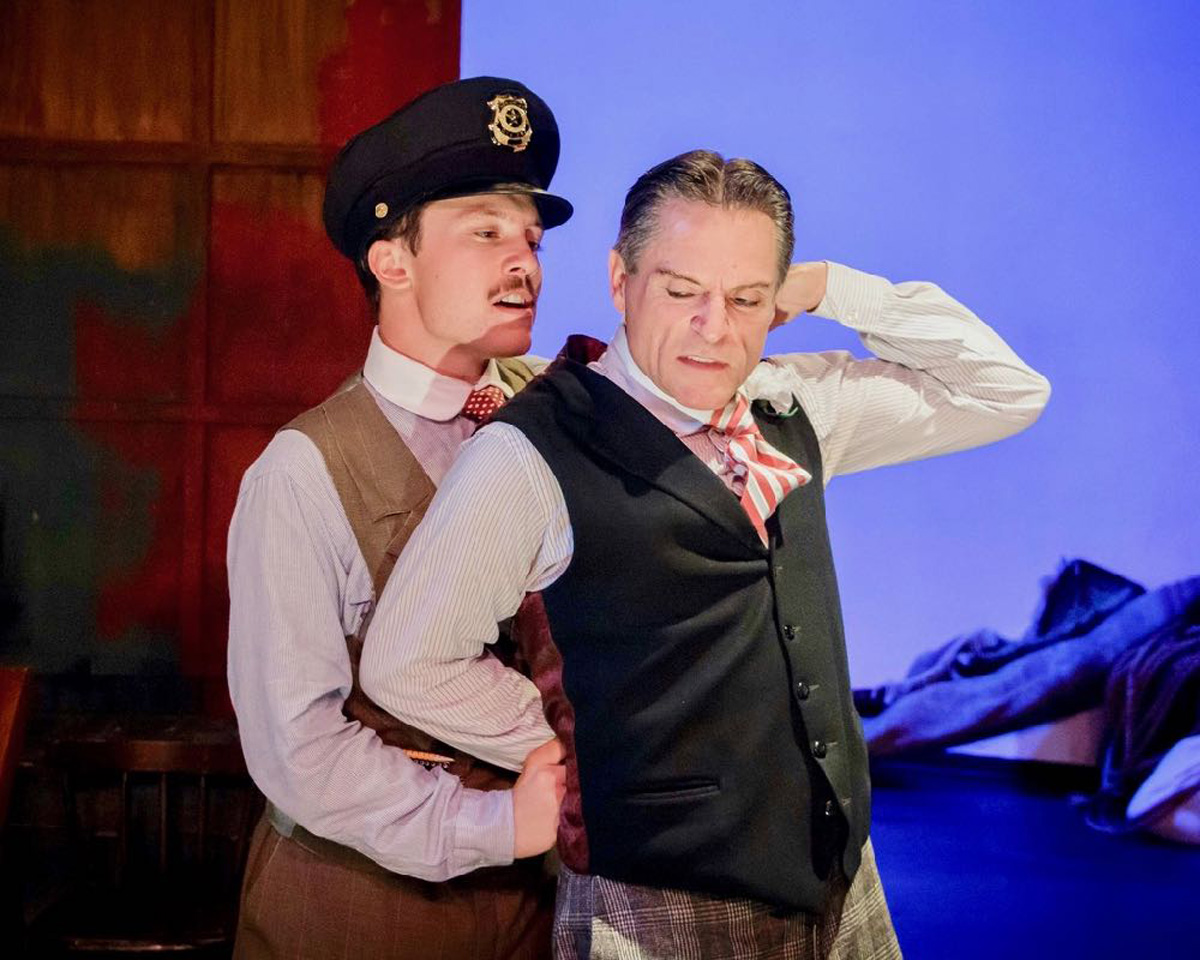
Long Beach—OC’s poor redheaded stepchild to the east (if east means west, that is), a city with no identity or economic or cultural import—does have some merits. Yes, Iowa-by-the-Sea remains as electrifying as that long-scuttled nickname would suggest, but the so-called International City sure has a lot of ships that visit. And you can ride in a gondola next door in Naples. And it’s right next to a real city: San Pedro.
Oh, and it is also America’s 25th queerest city (according to a survey by The Advocate in 2017 of cities with more than 250,000 residents), with its own gay mayor, Robert Garcia; one of the liveliest gay-pride events in the country; and LGBTQ neighborhoods such as Alamitos Beach and parts of Bluff Park and Belmont Heights.
But it hasn’t exactly been the smoothest of journeys. A 2013 Historical Society of Long Beach exhibit that traced the history of the gay community in the city from 1914 to 2012 reminded the rest of us that 10 months before the landmark Stonewall Inn riots in New York City in 1969, a Long Beach resident mounted a “nonviolent rebellion” against harassing cops at his local watering hole, the Patch, and made a strong case that the gay-rights movement was incubated in the city after World War II.
Tom Jacobson’s play The Twentieth-Century Way puts that needle even further back: to 1914, when the Long Beach Police Department hired two actors to pose as vice cops in a citywide dragnet to arrest “social vagrants” (read: men who may or may not have been engaging in “homosexual acts”) who were giving the city of god-fearing church folk a bad name. Basically, the actors attempted to lure gay men into showing them their private parts, at which point they were arrested. It was entrapment, plain and simple, and some 33 men were rounded up, with most run out of town and their social standing destroyed. (Flashforward to 2016, when, as the digital magazine Q Voice News elaborated last month, a Long Beach Superior Court judge shamed the city’s police department for targeting gay men in lewd-conduct sting operations.)

Jacobson’s 2010 play, which played Off-Broadway in 2015, makes its Long Beach premiere at the city’s oldest producing entity, the Long Beach Playhouse. But while this is a story steeped in history, and while Jacobson includes scoop-chasing journalists, sanctimonious townsfolk, less than morally upstanding cops and so-called “vagrants,” many of whom were far more respectable and law-abiding than their fellow citizens, this is anything but a straight-up history play. It’s a play within a play—hell, it’s a lot of plays within a lot of plays—as it all takes place in an unnamed theater in 1914 and features two actors playing all the roles. Those two actors, both of whom pull off the Herculean feat of switching between a myriad of characters, often during the same line, are Noah Wagner and Christian Jordan Skinner. Wagner plays Warren, an older, mysterious actor who still traffics in the older representational style of acting (basically pretending), while Skinner portrays Brown, a younger devotee of an inward-based acting style (think the method). Both have shown up for an audition to an unnamed play for the same role. Warren, who constantly seems to be working an angle, convinces Brown they are going to test their skills through improvising; the actor who convincingly outperforms the other can stick around and get the part.
While Jacobson introduces these twin conceits early—the clash between acting styles, an improvisational battle—neither is strongly supported during the course of the approximately two-hour play. The beginning, as well as the strange ending, which seems to suggest a more modern sense of self-loathing, self-denying closeted men, seem shoehorned in. While the structure is ambitious, its start and finish are not adequately fleshed out and don’t comfortably rest with everything in between. That’s a shame because what happens in between, from the shameless hustling of the two actors, who are really nothing more than bounty hunters, to the toll this sting takes on consenting adults, many of whom are entrapped in their own homes, to the disgusting hypocrisy of people attempting to build a so-called morally upstanding community by championing such an ugly, immoral campaign, is gripping, poignant and anger-inducing. In the hands of director Reed Flores, both Wagner and Skinner deliver exceptional performances. Yes, with so many characters popping in and out, it’s difficult at times to keep track of just what is going on, but it’s undeniable that something Big is happening here.
It may not be a perfect play, but it’s a perfect reminder that one of the highest callings a playwright can aspire to is less reminding us of history, warts and all, but re-imagining it and, by doing so, convincingly illustrating Faulkner’s line that the past is never dead—it’s not even past.
The Twentieth-Century Way at Long Beach Playhouse Studio Theatre, 5021 E. Anaheim St., Long Beach, (562) 494-1014; www.lbplayhouse.org. Fri.-Sat., 8 p.m.; Sun., 2 p.m. Through Aug. 18. $24.
Joel Beers has written about theater and other stuff for this infernal rag since its very first issue in, when was that again???


I recently tried CBD gummies from this website https://www.cornbreadhemp.com/products/cbd-sleep-gummies as a replacement for the pre-eminent time and was pleasantly surprised next to the results. Initially skeptical, I start that it significantly helped with my anxiety and sleep issues without any unconcealed side effects. The grease was easy to speak, with definite dosage instructions. It had a mild, vulgar grain that was not unpleasant. Within a week, I noticed a patent convalescence in my total well-being, instinct more blas‚ and rested. I cognizant the natural approximate to wellness CBD offers and aim to continue using it.